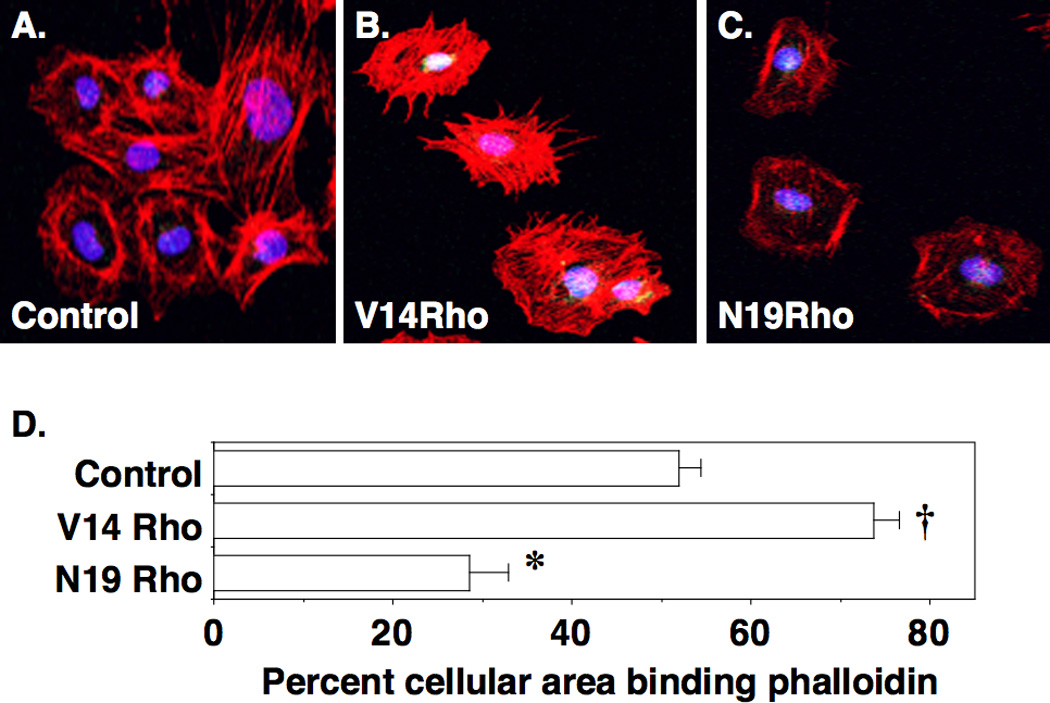Figure 4.

Effect of V14Rho and N19Rho on actin polymerization in podocytes. A few stress fibers are seen in podocytes treated with control proteins. In contrast, V14Rho(+) treatment enhanced the number of stress fibers; whereas, treatment with N19Rho(+) caused a decrease in stress fiber formation. Quantitation of the percent cellular area binding phalloidin is shown in panel D. There was a significant increase in the percent cellular area binding phalloidin in V14Rho(+) treated podocytes compared to cells treated with either control proteins or N19Rho(+). Treatment with N19Rho(+) significantly decreased phalloidin binding compared to cells treated with either control proteins or V14Rho(+). *P< 0.01 vs cultured podocytes treated with either control TAT proteins or N19Rho(+), †P<0.01 vs cultured podocytes treated with either control TAT proteins or V14Rho(+)
